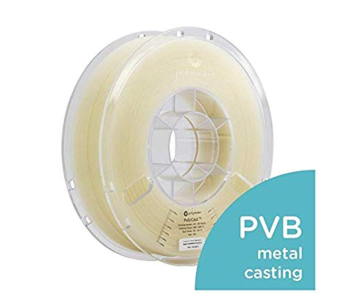What is Investment Casting? Applications, Pros and Cons
Now that 3D printing is so common, replicating models and creating prototypes have become so much easier compared to how things were done a couple of decades ago. However, it’s still worth our time to take a look back at the more old-fashioned methods and come up with ways to incorporate our new technologies with them.
One of the oldest methods to replicate a model is investment casting, or lost wax casting. This method involves making a prototype made of wax, from which a mold is made using refractory materials. How exactly does investment casting, and where is it used? How can we take this process and combine it with current 3D printing technology?
What is investment casting?

Investment casting is a very old manufacturing method, likely dating back to thousands of years ago. Ancient texts from 1100 AD point to the first use of investment casting to create the Perseus with the Head of Medusa sculpture that stands in Florence, Italy. Back then, beeswax was the preferred material for creating the prototypes, while clays were used to make the molds.
In the modern era, investment casting has become one of the preferred manufacturing methods for recreating delicate designs without any machining. It was first heavily used to create crowns and inlays for dentistry but was soon picked up by many other industries such as aerospace travel, automotive, sports goods, and the military.
Below is a basic outline of the steps of the investment casting process:
1. Making the master pattern
The first step of investment casting is to make the master prototype made of wax. Industrial applications typically involve some degree of machining, but artisans can also do this step by hand.
For multiple replications of a model, multiple copies of the master pattern can be attached to a wax sprue to create a cluster of patterns that resembles a tree. This is a very common practice in industrial-scale manufacturing applications, and it’s possible to make a tree that contains up to a hundred master patterns.
2. Apply refractory materials
With the master pattern established, it’s time to apply the materials that will eventually form the mold. Known as “investing,” this step involves the application of refractory (or heat-resistant) materials to the master pattern. Common refractory materials used in investment casting include silica, alumina, aluminum silicates, or zircon.
There are three steps to creating the investment. The first step, coating, is done by dipping the master pattern into a slurry of the refractory material. This allows the investment material to get into all the fine gaps of the pattern to recreate even its smallest details. This fine coat is then supplemented by applying larger volumes of the refractory material either by hand or by subjecting the master pattern to a rainfall-sander. The refractory material is then hardened by exposure to high temperatures.
These steps need to be repeated until a sufficiently thick and strong layer of the investment has been made. A minimum thickness of 5 millimeters is usually desired. When the investment is thick and strong enough, the mold is left to dry for up to 48 hours. Binders, such as silicate compounds, can also be combined with the investment material to improve the mechanical strength and chemical stability of the mold.
3. Dewax
Once the mold has fully hardened, it is placed inside a furnace and turned upside-down. The temperature melts the wax inside the mold and allows it to flow out. The wax that runs out of the mold is usually recovered and reused, especially for commercial applications of the technology.
A rapid temperature increase is desired in this step so that the wax at the outer layer can start to flow freely before the rest of it starts to expand, thereby damaging the mold.
4. Burnout the mold
For the last step, the mold is subjected to even higher temperatures in the range of 800 to 1000 °C. This step does two things. The first is that it vaporizes any traces of residual wax or moisture that may not have been removed during the dewaxing process. The second is that it sinters the mold, further hardening it.
At this point, molten metal can be poured into the mold to create the final prototypes. Pouring metal into a hot mold is ideal because the metal stays in liquid form longer, allowing it to fill up the small pockets in the mold that create all the fine details. The mold can also be allowed to cool after the burnout step to check for any cracks or holes. In any case, the final metal prototype will need to be post-processed using the usual sanding and polishing methods.
Applications of investment casting
Being one of the earliest casting methods, it’s a testament to the usefulness of investment casting that it’s still widely practiced by a lot of commercial and industrial firms nowadays. The following are just some of the most common and relevant applications of investment casting:
- Engineering components such as rotors and turbine blades in motors and generators
- Valve parts (casings, pistons, etc.)
- Firearms manufacturing (triggers, hammers, etc.)
- Manufacturing equipment for food and beverage industry
With such widespread use, it’s safe to say that almost all industries have benefited from tools and equipment made using investment casting.
Pros and cons of investment casting
As with any manufacturing method, investment casting is not a perfect process. It may not be the suitable technique depending on the geometry of your model, or it may simply be too slow for your desired throughput. When making the decision to do investment casting versus other methods, these are the pros and cons that you need to weigh:
PROS
1. Can recreate intricate designs
One of the primary reasons why investment casting is often the preferred manufacturing method is the fact that it can recreate highly detailed models, even those with small features and thin walls. The level of detail possible with investment casting is good enough for industries that rely on high-precision tools and components such as automobiles and aerospace travel. Even forward-thinking jewelry makers have started to recognize the benefit of investment casting.
2. Casts come out with smooth surfaces
Because of the process by which the mold is made by enveloping the master pattern with a slurry of refractory material, the metal casts that come out of the mold come out with remarkably smooth surfaces. Some post-processing will still be needed for the metal casts to get them perfectly smooth, but they require much less time and work.
3. Good dimensional accuracy
The use of refractory materials for the mold in investment casting helps in preserving the original dimensions of the master pattern. This dimensional stability when exposed to heat translates to metal casts that are faithful to the master pattern in terms of scale. According to experts, tolerances as low as 0.076 millimeters are possible in investment casting.
CONS
1. Longer production cycles
Although there are a few parts of the investment casting process that can be automated, it cannot be argued that it is still much slower compared to other manufacturing methods. Industries that rely on high production volume and quick turnover might have problems with investment casting
2. High cost
Although the investment casting process looks simple, it’s actually a pretty expensive method because of the use of costly materials and specialized equipment. The cost of labor also needs to be factored in, as there’s a lot of manual work involved. If you will be using investment casting for small volume production, its economics might not hold up well.
3. Not suitable for designs with cores
Investment casting is suitable for creating purely solid objects such as turbine blades or pump casings. However, if the geometry of your model contains a hollow core, then you might need to look into other, more appropriate methods.
Investment casting and 3D printing

One of the more exciting strides that investment casting has taken in the last few years is the possibility of combining it with 3D printing, specifically FDM printing, using wax filament. The premise is simple: instead of machining or hand-carving a master pattern out of wax, a 3D printer can instead be used for added convenience and accuracy.
3D printing wax patterns for investment casting opens up a lot of opportunities for manufacturing firms. It allows for increased automation, reducing reliance on manual work, and hopefully speeding up the process. Companies that operate across multiple facilities can receive a 3D model digitally and print them locally without loss of fidelity from the original master pattern.
Being a relatively new field, there are not a lot of wax filaments available today that are suitable for creating master patterns. The wax filament from Print2Cast and Polycast filament from Polymaker are probably the two best options you can find. Wax filaments are quite soft and flexible, though, making them quite challenging to work with.
For best results, it is recommended that you use a heated bed treated with an adhesive and use very slow cooling. The filament can also easily get deformed within the extruder assembly, making a direct drive extruder more ideal. The nice thing about these filaments is that the prints can be sanded and polished to make them smoother. They can also burn out cleanly, leaving no residue inside the mold.
Final thoughts
Investment casting is an old and well-established manufacturing process, but its integration with 3D printing just breathes new life into it. Although 3D printing does not solve all the issues of investment casting, it makes it more feasible for manufacturing companies that are geared towards automation or want to achieve better consistency and faster throughput.





